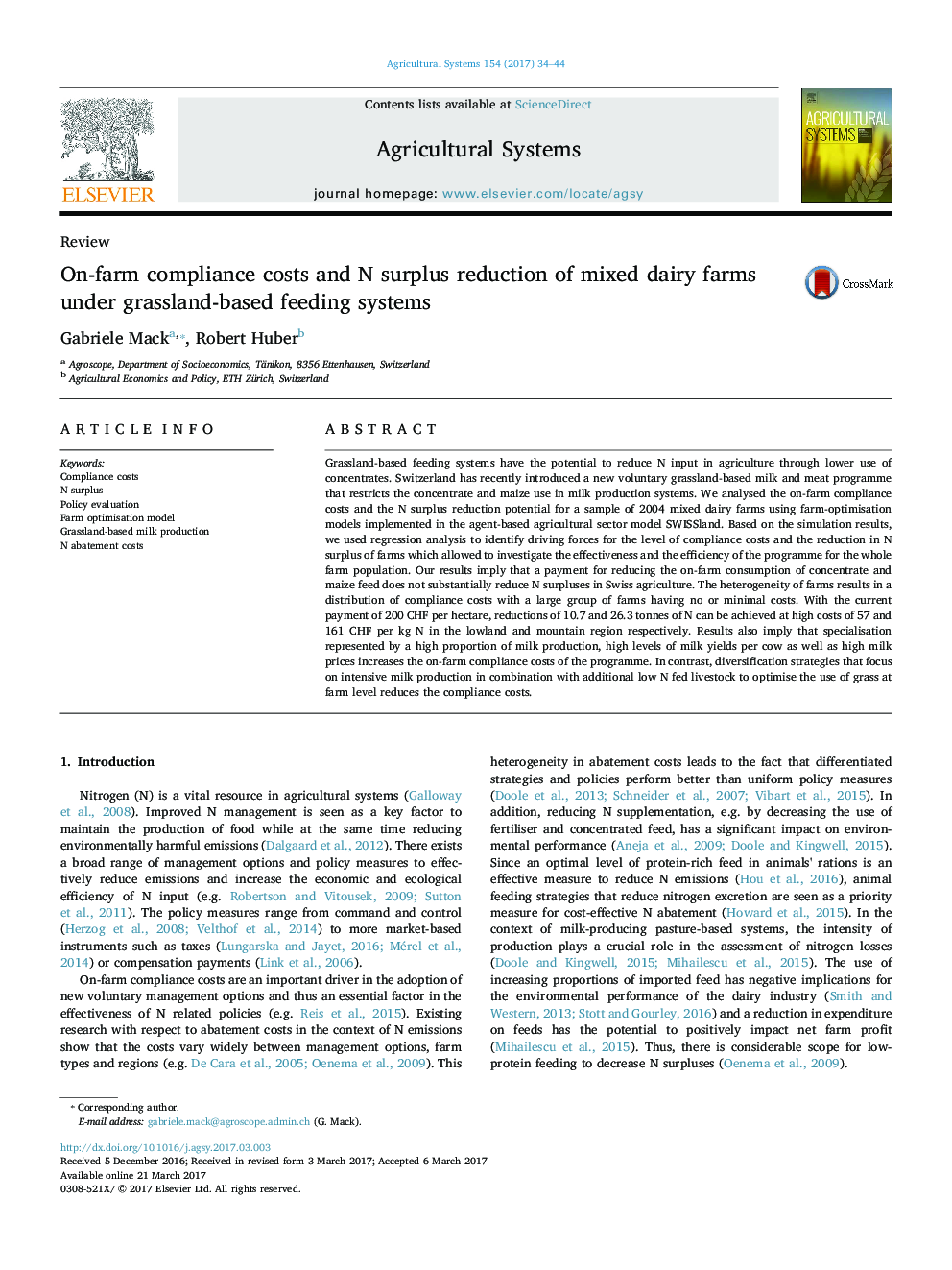| Article ID | Journal | Published Year | Pages | File Type |
|---|---|---|---|---|
| 5759659 | Agricultural Systems | 2017 | 11 Pages |
â¢Payments for reducing the on-farm consumption of concentrate and maize feed do not substantially reduce N surpluses.â¢The heterogeneity of farms results in a distribution of compliance costs with a large group of farms having no or low costs.â¢With the current payment of 200 CHF per hectare, reductions of N can be achieved at high costs.â¢Results imply that specialisation in milk production increases the on-farm compliance costs of the programme
Grassland-based feeding systems have the potential to reduce N input in agriculture through lower use of concentrates. Switzerland has recently introduced a new voluntary grassland-based milk and meat programme that restricts the concentrate and maize use in milk production systems. We analysed the on-farm compliance costs and the N surplus reduction potential for a sample of 2004 mixed dairy farms using farm-optimisation models implemented in the agent-based agricultural sector model SWISSland. Based on the simulation results, we used regression analysis to identify driving forces for the level of compliance costs and the reduction in N surplus of farms which allowed to investigate the effectiveness and the efficiency of the programme for the whole farm population. Our results imply that a payment for reducing the on-farm consumption of concentrate and maize feed does not substantially reduce N surpluses in Swiss agriculture. The heterogeneity of farms results in a distribution of compliance costs with a large group of farms having no or minimal costs. With the current payment of 200 CHF per hectare, reductions of 10.7 and 26.3Â tonnes of N can be achieved at high costs of 57 and 161 CHF per kg N in the lowland and mountain region respectively. Results also imply that specialisation represented by a high proportion of milk production, high levels of milk yields per cow as well as high milk prices increases the on-farm compliance costs of the programme. In contrast, diversification strategies that focus on intensive milk production in combination with additional low N fed livestock to optimise the use of grass at farm level reduces the compliance costs.
